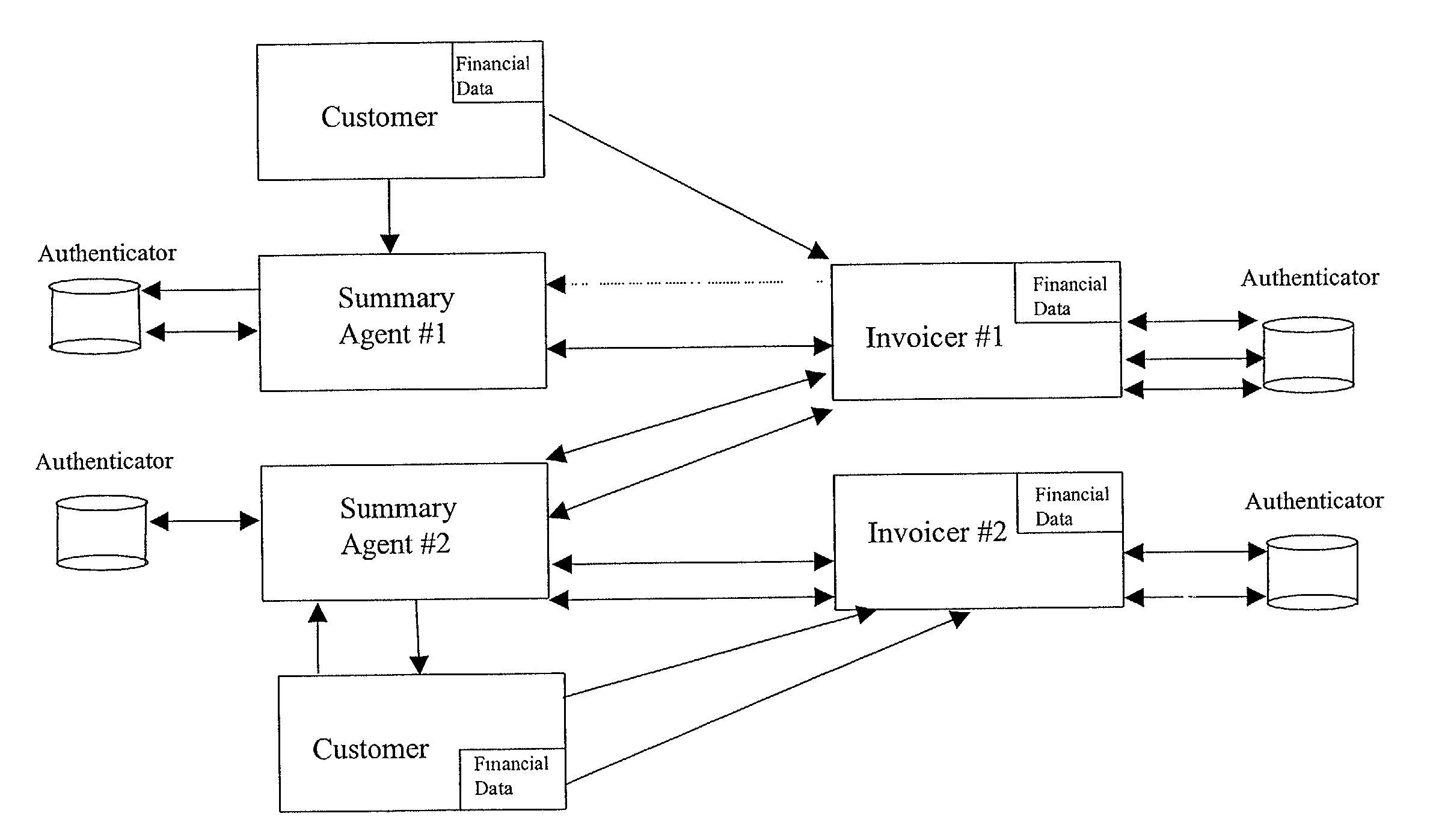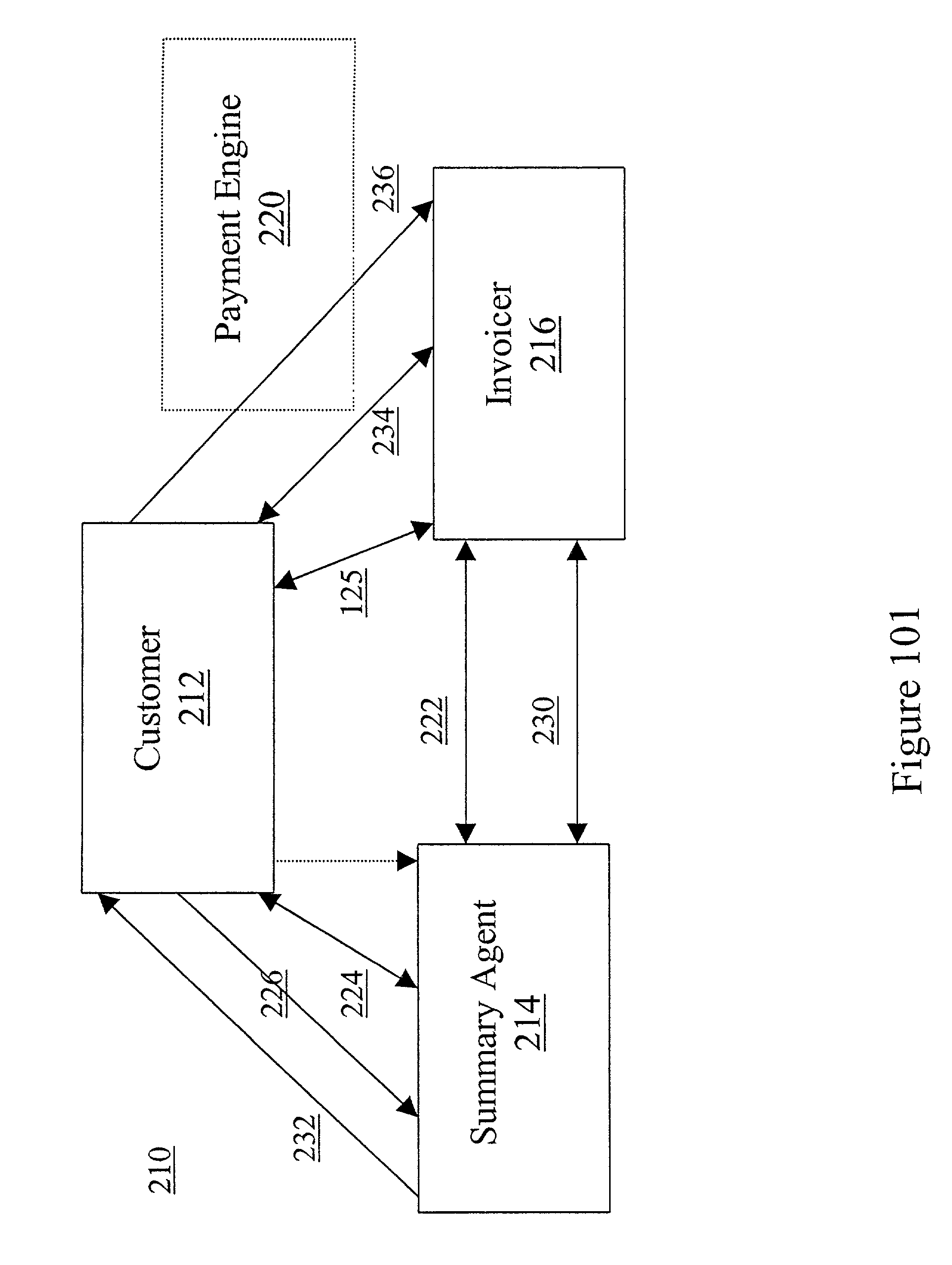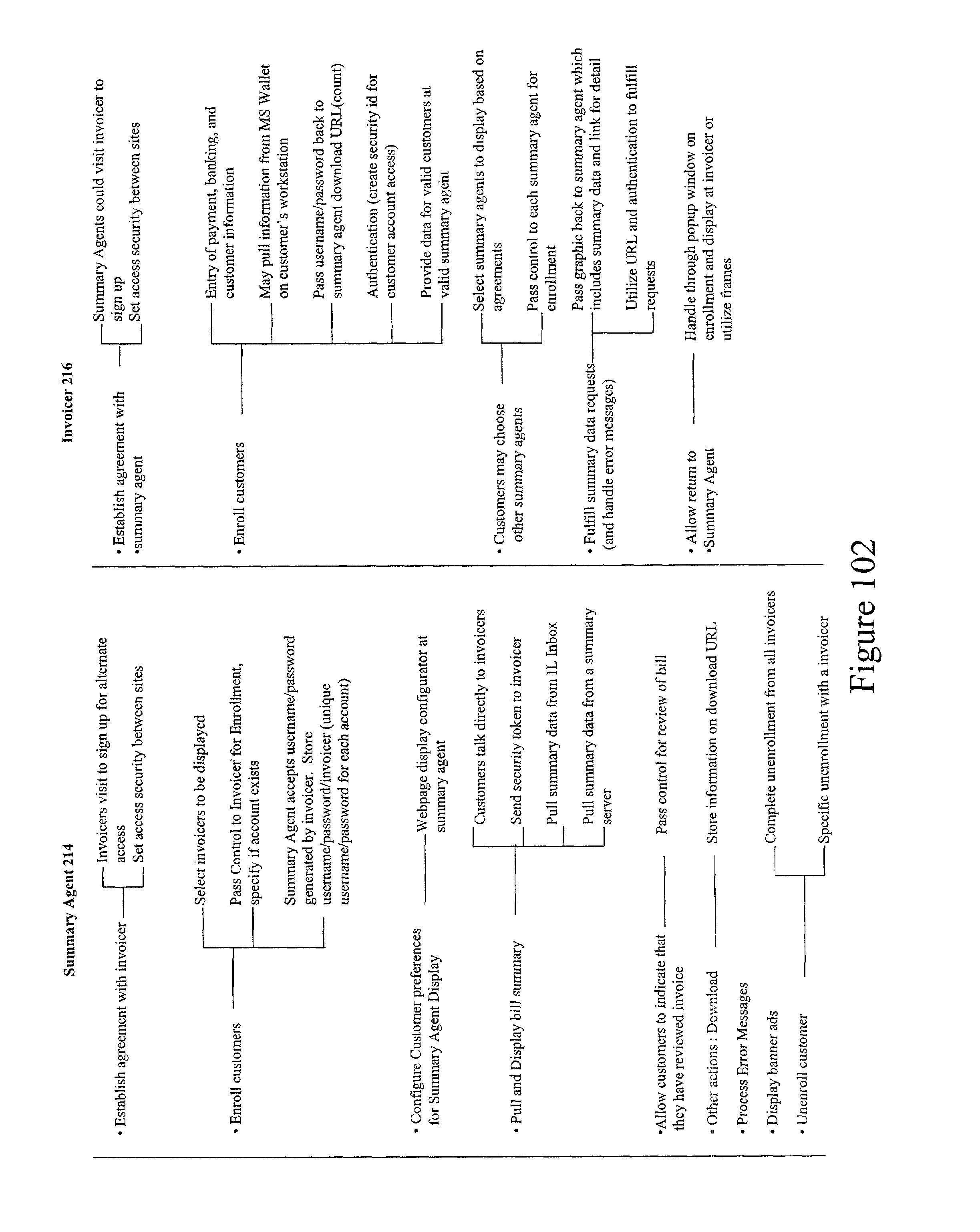Interactive invoicer interface
a payment gateway and invoicer technology, applied in billing/invoicing, instruments, marketing, etc., can solve the problems of high cost per transaction, high labor intensity, and high complexity of invoice and payment collection, and achieve the effect of simplifying access, reducing cost per transaction, and simplifying retrieval
- Summary
- Abstract
- Description
- Claims
- Application Information
AI Technical Summary
Benefits of technology
Problems solved by technology
Method used
Image
Examples
Embodiment Construction
[0050]In the following description, like reference characters designate like or corresponding parts throughout the several views. Also in the following description, it is to be understood that such terms as “forward,”“rearward,”“left,”“right,”“upwardly,”“downwardly,” and the like are words of convenience and are not to be construed as limiting terms.
[0051]As best seen in FIG. 101, there is shown an overall schematic view of a dynamic consolidation model, generally designated 210, constructed according to the present invention. The basic components are the customer Internet interface 212; the summary agent portal 214; and at least two invoicers 216. In the preferred embodiment, the invention also includes a payment engine 220, which is the interface between the customer Internet interface 212 and the invoicers 216. In the preferred embodiment, such a payment engine is described in U.S. Pat. No. 6,044,362, issued Mar. 28, 2000, which again is hereby incorporated by reference in its en...
PUM
 Login to View More
Login to View More Abstract
Description
Claims
Application Information
 Login to View More
Login to View More - R&D
- Intellectual Property
- Life Sciences
- Materials
- Tech Scout
- Unparalleled Data Quality
- Higher Quality Content
- 60% Fewer Hallucinations
Browse by: Latest US Patents, China's latest patents, Technical Efficacy Thesaurus, Application Domain, Technology Topic, Popular Technical Reports.
© 2025 PatSnap. All rights reserved.Legal|Privacy policy|Modern Slavery Act Transparency Statement|Sitemap|About US| Contact US: help@patsnap.com



